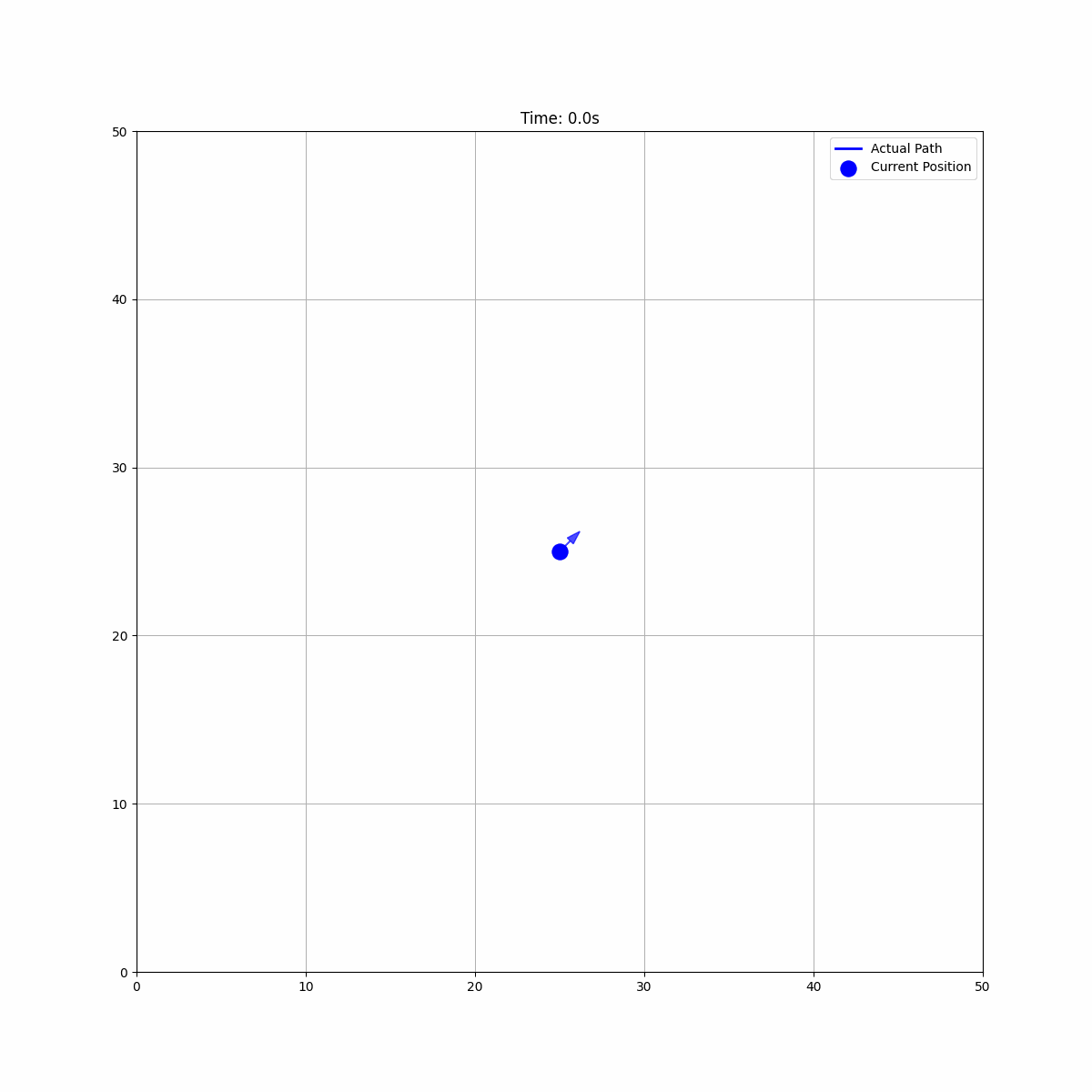DeepTraject is a trajectory prediction framework that combines classical estimation algorithms with deep learning approaches. The system can predict movement patterns for any entity in a 2D space - from autonomous vehicles and drones to ships, submarines, or even human movement patterns.
-
🤖 Hybrid Prediction Architecture
- Kalman Filter for state estimation
- LSTM with attention mechanism for pattern learning
- Ensemble approach combining both methods
-
🎮 Grid-Based Simulation Environment
- Configurable grid size and resolution
- Support for continuous movement within discrete grid
- Boundary handling and collision avoidance
-
📊 Multiple Trajectory Types
- Circular patterns
- Figure-eight patterns
- Lane-change maneuvers
- Random walks with smoothing
- Custom trajectory support
-
📈 Real-Time Analysis
- Interactive dashboards
- Live prediction visualization
- Performance metrics tracking
- Uncertainty estimation
- 🚗 Autonomous Vehicles: Predict vehicle trajectories in traffic
- 🚁 Drone Navigation: Estimate flight paths and patterns
- 🚢 Maritime Operations: Track and predict ship movements
- 🤖 Robotics: Plan and predict robot movement paths
- 👥 Crowd Analysis: Study and predict pedestrian movements
- 🎮 Gaming AI: Predict player or NPC movement patterns
- Configurable 2D grid environment
- Continuous movement within discrete grid cells
- Customizable grid resolution and size
- Boundary handling and wraparound options
-
Kalman Filter
- 4-state tracking (x, y, vx, vy)
- Real-time state estimation
- Uncertainty quantification
-
LSTM Neural Network
- Sequence-based prediction
- Attention mechanism for pattern recognition
- Adaptive learning rate
-
Ensemble Predictor
- Weighted combination of predictions
- Dynamic weight adjustment
- Model confidence scoring
| Trajectory Type | Kalman Error (m) | LSTM Error (m) | Ensemble Error (m) |
|---|---|---|---|
| Circular | 0.45 | 0.38 | 0.31 |
| Figure-Eight | 0.52 | 0.41 | 0.35 |
| Lane-Change | 0.38 | 0.44 | 0.33 |
Python 3.8+
PyTorch 2.0+
NumPy
Matplotlib
Plotlycd deeptraject/public
pip install -r requirements/requirements.txtfrom deeptraject.simulation import SimulationRunner
from deeptraject.utils.types import TrajectoryType
# Initialize simulation with custom grid size
runner = SimulationRunner(grid_size=(50, 50))
# Run single trajectory prediction
trajectory_type = TrajectoryType.CIRCULAR
await runner.run_simulation(
trajectory_type,
steps=100,
radius=10.0
)
# Run full benchmark suite
await runner.run_benchmarks()public/
├── src/ # Core source code
├── tests/ # Test suites
├── docs/ # Documentation
└── experiments/ # Experiment results
- Configurable dimensions (default: 50x50)
- Continuous position tracking within grid
- Customizable boundary conditions
- Support for multiple entities
- State observation
- Multiple model predictions
- Ensemble combination
- Error calculation
- Model adjustment
This project is licensed under the MIT License - see the LICENSE file for details.
Michael La Rosa
- Email: hello@mlarosa.dev






